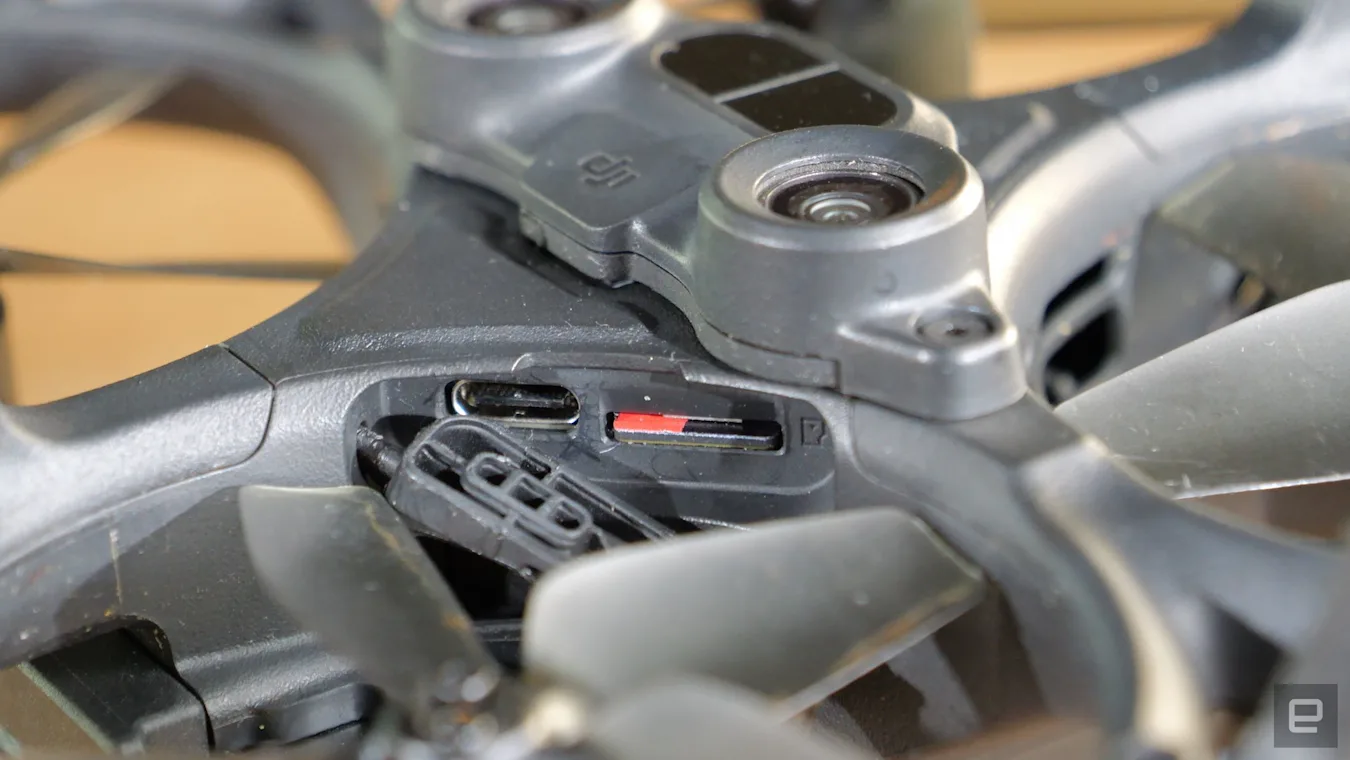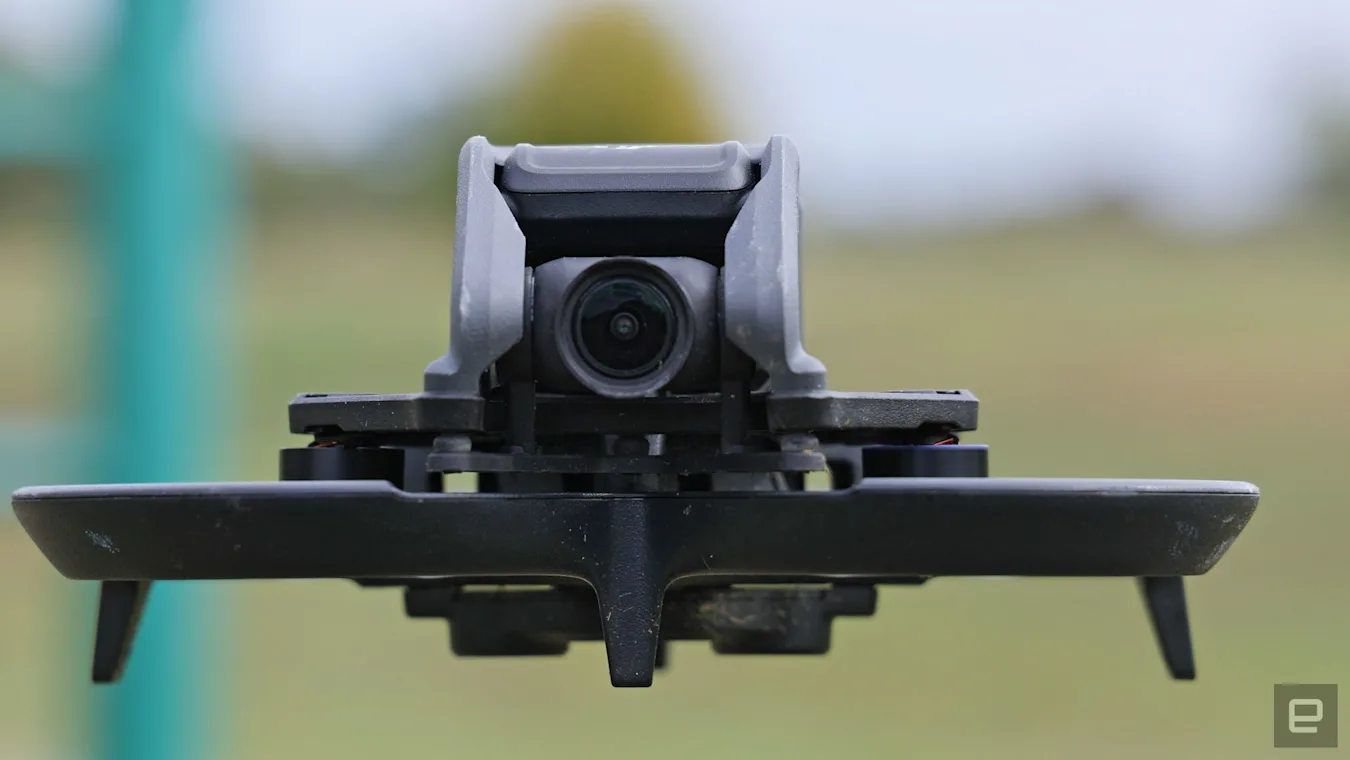Cinewhoop drones are all the rage right now, as they can dive and twist and speed through unreachable places to produce spectacular footage. DJI has jumped on that trend with the Avata, an FPV drone that’s far removed from the company’s speedy DJI model actually called the FPV. Instead, the Avata is more about agility and has propeller guards that make it safe to fly around people.
It’s available with the new Goggles 2 that are smaller and lighter than the Goggles V2 that come with the DJI FPV drone. You can also get it with an updated Motion Controller that lets you steer the Avata by moving your wrists.
The system could help drone users get into the world of FPV and cinewhoop, but it isn’t cheap at $1,388 with the Goggles 2 and Motion Controller. To find out how it compares to the FPV and other drones, I enlisted my drone pilot friend Samuel to test it in a number of challenging scenarios.
Body
The Avata doesn’t look like any of DJI’s other consumer drones. To fly indoors, around people or in tight spaces, it has prop guards and a small, 7-inch square by 3.1-inch high body. At 410 grams it’s much lighter than the FPV, but a bit heavier than the 249-gram Mini 3 Pro. As such, it requires registration or a license in Europe, the US and many other countries.
The batteries use a flexible connector designed to limit crash damage. DJI claims up to 18 minutes of flight time, but we generally got around 10-12 minutes, or even less if we flew it extremely fast. That’s still good for an FPV drone (most are under 10 minutes), but DJI should be a bit more realistic in its marketing.
The Avata’s battery charges in about 45 minutes, and you can get two extra batteries and a charger with the $279 Fly-More kit. Samuel indicated that if he bought one for his photography business, he’d get six batteries at a minimum.

Steve Dent/Engadget
I’d also buy the largest microSD cards possible, because the slot tucked underneath is extremely awkward to access – particularly when removing a card. The USB-C port for transfers and charging is equally hard to get to. DJI normally excels with these types of features, but these are honestly serious design flaws. On the plus side, the Avata has 20GB of internal storage that can serve in a pinch.
Underneath are two time-of-flight sensors that can detect and map ground obstacles. However, the Avata doesn’t have any forward-facing sensors, so its main protection is the prop guards and rugged design.
The Avata Pro View Combo ships with the DJI Motion Controller as the only way to fly the drone. You can also use the FPV Remote Controller 2, but it’s sold separately for $200.
Also included in that bundle are the new Goggles 2 – not to be confused with the Goggles V2. They’re smaller and lighter than the latter, and use micro-LED instead of OLED panels, with 1080p resolution for each eye compared to 810p on Goggles V2. You can use the V2 with the Avata and FPV, but the Goggles 2 only work with the Avata.
Gallery: DJI Avata FPV drone image gallery | 25 Photos
Gallery: DJI Avata FPV drone image gallery | 25 Photos
The extra sharpness and small size are nice, but you can’t wear glasses underneath the Goggles 2. Instead, they have built in diopters to correct your eyesight. If you have astigmatism, DJI includes lens mountings that you can send back to have your prescription made.
Samuel wasn’t crazy about the diopter. While they gave him a clear view, he often had to remove the headset to see the drone, which meant he needed to put his glasses back on. He found the Goggles V2 easier as he can wear his glasses underneath.
The Goggles 2 let you fly the Avata with no mobile phone, as they have a mini-version of the DJI Fly app built-in. If you want to let others have a view, you can connect a smartphone via USB-C port on the side, though. The Goggles 2 control the Avata via DJI’s Ocusync O3, providing a 50Mbps video feed from up to 6.2 miles away. However, we noticed that the Goggles V2 provide a stronger feed over a longer distance, probably because of the larger antennas.
Performance

Steve Dent/Engadget
The Avata is a blast to fly, but it’s not as fast as some FPV drones. It tops out at 60 MPH in manual mode, well under the 87 MPH of DJI’s FPV. And that’s in manual mode – sport and normal modes are considerably slower at 31 MPH and 18 MPH, respectively.
It has awesome maneuverability though, letting you fly in places you’d never take another drone. We took it around handball players during a practice, between our legs, through the small gap in a sign, around a castle rooftop and indoors with people and fragile things around. It’s also tough. We had a number of crashes that would have killed an open-prop drone. It can also bounce off a person without doing them any harm.
Considering that the Avata might be the first FPV drone for many people, selling it with the Motion Controller is a good idea – but not as the only option. DJI should also sell a bundle with the FPV Controller 2, which offers more precise control for advanced users. As it stands now, you have to pay an extra $199 to get it.
The Motion Controller is easy to use – you simply point it where you want to fly and pull the trigger to speed up. To climb, tilt the controller upward and apply power, and reverse that for descents. A large button on top brings it to a hover, and the red button lets you take off and land.

Steve Dent/Engadget
It has some limitations, though. You can’t transition vertically or fly backwards with the Motion Controller, so you have to use a button to land. It also lacks precision, especially indoors. In fact, we found that without a GPS lock inside, the Avata was sometimes unflyable with the Motion Controller.
If you have some experience, the FPV Controller 2 is a better option. It allows you to engage manual mode to cruise faster, fly low to the ground and zag between trees or rooftops. Inside, you can fly precisely between rooms, objects and people, just like you may have seen in some of those cool cinewhoop FPV videos.
Manual mode also opens up flips, dives, climbs, hairpin turns, rolls and other tricks. Just bear in mind that there are no sensor safeguards. While Avata drone is tough, it’s not unbreakable and could really hurt someone at 60 MPH. It’s also more unstable, so flying it requires serious skill. It is a ton of fun, though, with the speed and lack of safeguards providing a real adrenaline rush that you don’t get from other drones.
Video quality
Most so-called Cinewhoop FPV drones use external cameras like the GoPro Hero Bones (or just regular stripped-down GoPros), but the Avata has one built in. It uses the same size 1/1.7-inch sensor as the new Action 3 camera, with 64 percent more area than the FPV.
Like the Action 3, it has normal, wide and ultra-wide options with up to a 155 degree field of view. And on top of the built-in gimbal and RockSteady smoothing, it has the HorizonView option to keep things level, even if the drone is tilting heavily.
Article From & Read More ( The DJI Avata is a nimble cinewhoop drone for FPV novices - Engadget )https://ift.tt/7yDEetR
Technology

No comments:
Post a Comment